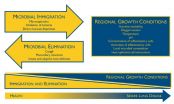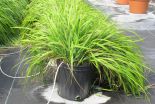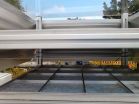Danish breakthrough brings futuristic electronics a step nearer
2015-08-17
(Press-News.org) When researchers dream about electronics of the future, they more or less dream of pouring liquids into a beaker, stirring them together and decanting a computer out onto the table. This field of research is known as self-assembling molecular electronics. But, getting chemical substances to self-assemble into electronic components is just as complicated as it sounds. Now, a group of researchers has published their breakthrough within the field. The group consists of first-year nanoscience students from the University of Copenhagen.
Thomas Just Sørensen, an associate professor at the University of Copenhagen, spearheaded the research project. The groups result has been published in the internationally recognized journal ChemNanoMat in an article entitled, "Template-Guided Ionic Self-Assembled Molecular Materials and Thin Films with Nanoscopic Order". Sørensen believes that the result will spawn new breakthroughs: "This is a clear step forward towards self-assembling electronics. By mixing solutions of the right substances, we automatically built structures that in principle could have been solar cells or transistors. What is more, is that they were built in the same way that nature builds such things as cell membranes," says Sørensen.
Sørensens co-authors are the entire first-year of University of Copenhagen nanoscience students. This impressive feat is the result of a restructuring of the nanoscience programme in 2010, from a programme structured upon research-based instruction, to one that uses teaching-based research. For their first assignment, the students were simply asked to design, conduct and analyse a range of experiments. The new instructional type has shed research results every year since. However, it wasn't until 2013 that a result was ready to be published.
"For us as a university, the big news is obviously that first year students conducted the research. But, we achieved a very significant result in molecular electronics as well," states Thomas Just Sørensen.
Electronics are normally produced in such a way that one "draws" components onto a silicon wafer and then removes all the bits that are not part of the electronic component. This is called "Top-down" production. Molecular electronics enables the production of transistors, resistors, LED screens, solar cells and so on, using chemistry-based methods. In principle, this means that electronics can become smaller, cheaper and more flexible, as well as environmentally sustainable. But whereas one can draw an integrated circuit on silicon, molecular components must self-organise into the correct structures. This is a major obstacle in the development of methods where molecules must join and self-organise in such a way that they can be found again, according to Sørensen.
"It doesn't help to have a pile of transistors, if you don't know which way they are turned. These cannot be combined in a way to make them work, and one won't know which end to connect to electric current."
The secret behind the breakthrough is... Soap. The molecular components that make self-assembling electronics possible are antifungal agents used in various disinfectants, creams and cosmetics. These cleansers kill fungi by disrupting the structures of their cell membranes. This same ability can be used to create order among molecular components. Sørensen and his students experimented by pouring a flood of various soaps, dish-soaps and washing powders together with component-like chemical substances. The mixtures were then poured out onto glass plates in order to investigate whether or not the "components" were organised by the various cleansing agents. And now they have been, says Sørensen.
"Our self-assembling electronics are a bit like putting cake layers, custard and frosting in a blender and having it all pop out of the blender as a perfectly formed layer cake," says Thomas Just Sørensen.
In the long term, these new discoveries open the door to developing powerful and economical solar energy facilities, as well as improved screen technologies. That being said, the molecules used in the nanoscience programme had no electronic functionality. "If they did, we would have been on the cover of Science instead of in a ChemNanoMat article," says Just Sørensen. Regardless, he remains confident.
"We were able to obtain a structure simply by mixing the right substances. Even random substances were able to organise well and layer, so that we now have complete control over where the molecules are, and in which direction they are oriented. The next step is to incorporate functionality within the layers," says Associate Professor Sørensen. He is convinced that the next batch of challenges will make for perfect assignments for the many years of nanoscience students to come, and that like their current peers, these students will also have the opportunity to publish while in their first year of study.
INFORMATION:
[Attachments] See images for this press release:

ELSE PRESS RELEASES FROM THIS DATE:
2015-08-17
This news release is available in German. Two growth-promoting groups of substances, or phytohormones, the gibberellins and the brassinosteroids, are used independently of each other for the breeding and production of crop plants. A team of scientists at Technical University of Munich (TUM) has now discovered that the two act in concert - without brassinosteroids, a plant is unable to produce gibberellins.
For their current investigations, a research group at the Technical University of Munich, supported by scientists from the Helmholtz Zentrum Munich and the TU Braunschweig ...
2015-08-17
ANN ARBOR, Mich. -- With every breath you take, microbes have a chance of making it into your lungs. But what happens when they get there? And why do dangerous lung infections like pneumonia happen in some people, but not others?
Researchers at the University of Michigan Medical School have started to answer these questions by studying the microbiome of the lungs - the community of microscopic organisms are in constant contact with our respiratory system.
By studying these bacterial communities, and how they change in illness, they hope to pave the way for new ways ...
2015-08-17
Troubling questions about multiracial congregations' potential to address racial inequality are raised by a new national study done by researchers at Baylor University, the University of Southern California and the University of Chicago.
The study -- "United by Faith? Race/Ethnicity, Congregational Diversity, and Explanations of Racial Inequality" -- is published in the journal Sociology of Religion.
"We find little evidence that multiracial congregations promote progressive racial views among attendees of any race or ethnicity," the researchers wrote. Views of minorities ...
2015-08-17
BOSTON, Aug. 17, 2015 --Native North Americans have long adorned themselves and their homes with fragrant sweetgrass (Hierochloe odorata), a native plant used in traditional medicine, to repel biting insects, and mosquitoes in particular. Now, researchers report that they have identified the compounds in sweetgrass that keep these bugs at bay.
The team will describe their approach in one of more than 9,000 presentations at the 250th National Meeting & Exposition of the American Chemical Society (ACS), the world's largest scientific society, taking place here through Thursday.
Mosquitoes ...
2015-08-17
BOSTON, Aug. 17, 2015 -- Hand-written letters and printed photos seem quaint in today's digital age. But there's one thing that traditional media have over hard drives: longevity. To address this modern shortcoming, scientists are turning to DNA to save unprecedented amounts of digital data for posterity. One team has demonstrated that DNA they encapsulated can preserve information for at least 2,000 years, and they're now working on a filing system to make it easier to navigate.
The researchers present their work today at the 250th National Meeting & Exposition of the ...
2015-08-17
BOSTON, Aug. 17, 2015 -- A blood clot is a dangerous health situation with the potential to trigger heart attacks, strokes and other medical emergencies. To treat a blood clot, doctors need to find its exact location. But current clinical techniques can only look at one part of the body at a time, slowing treatment and increasing the risk for complications. Now, researchers are reporting a method, tested in rats, that may someday allow health care providers to quickly scan the entire body for a blood clot.
The team will describe their approach in one of more than 9,000 ...
2015-08-17
BOSTON, Aug.17, 2015 -- In a first-of-its-kind study, researchers have determined that natural sunlight triggers the release of smog-forming nitrogen oxide compounds from the grime that typically coats buildings, statues and other outdoor surfaces in urban areas. The finding confirms previous laboratory work using simulated sunlight and upends the long-held notion that nitrates in urban grime are "locked" in place.
The scientists will present their findings based on field studies conducted in Leipzig, Germany, and Toronto, Canada, at the 250th National Meeting & Exposition ...
2015-08-17
New Internet-based technology may aid criminal justice agencies through tools such as better criminal databases, remotely conducted criminal trials and electronic monitoring of parolees in the community, according to a new RAND Corporation study.
Top criminal justice priorities for new Internet tools include developing a common criminal history record that can be shared across agencies, developing real-time language translation tools and improved video displays for law enforcement officers to adapt to changing needs, according to the analysis.
"The criminal justice ...
2015-08-17
During the deer's breeding season, or rut, the researchers from Queen Mary University of London (QMUL) and ETH Zürich, played male fallow deer (bucks) in Petworth Park in West Sussex, a variety of different calls that had been digitally manipulated to change the pitch and length and analysed their responses. The bucks treated lower pitched and longer calls as more threatening, by looking towards source of the call sooner and for longer, than others.
Fallow bucks attracted the attention of the researchers because of their intriguing calling behaviour. Males are silent ...
2015-08-16
BOSTON, Aug. 16, 2015 -- Sunlight can be brutal. It wears down even the strongest structures, including rooftops and naval ships, and it heats up metal slides and bleachers until they're too hot to use. To fend off damage and heat from the sun's harsh rays, scientists have developed a new, environmentally friendly paint out of glass that bounces sunlight off metal surfaces -- keeping them cool and durable.
The researchers present their work today at the 250th National Meeting & Exposition of the American Chemical Society (ACS). ACS, the world's largest scientific ...
LAST 30 PRESS RELEASES:
[Press-News.org] Danish breakthrough brings futuristic electronics a step nearer




